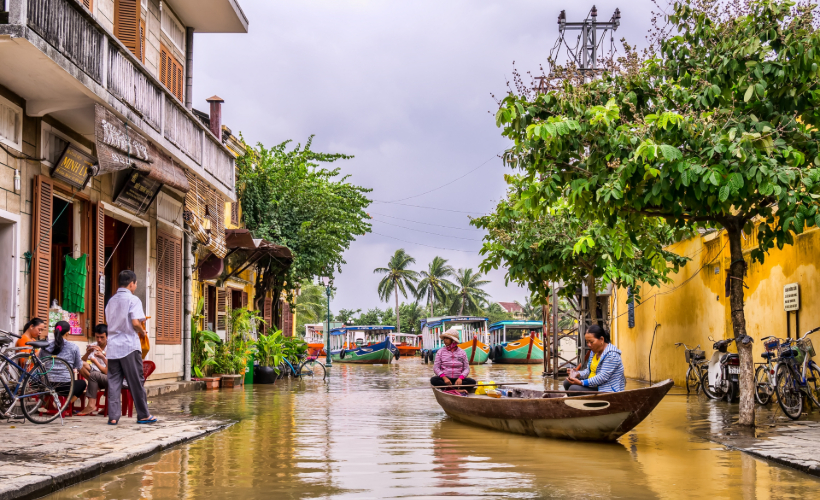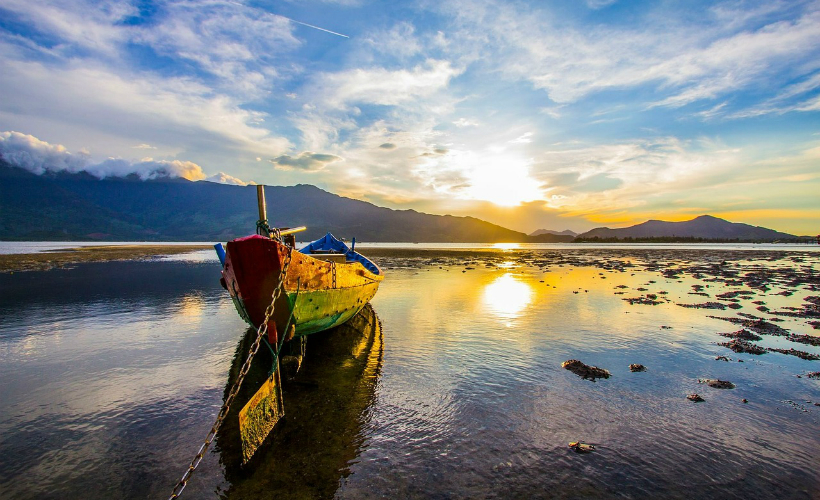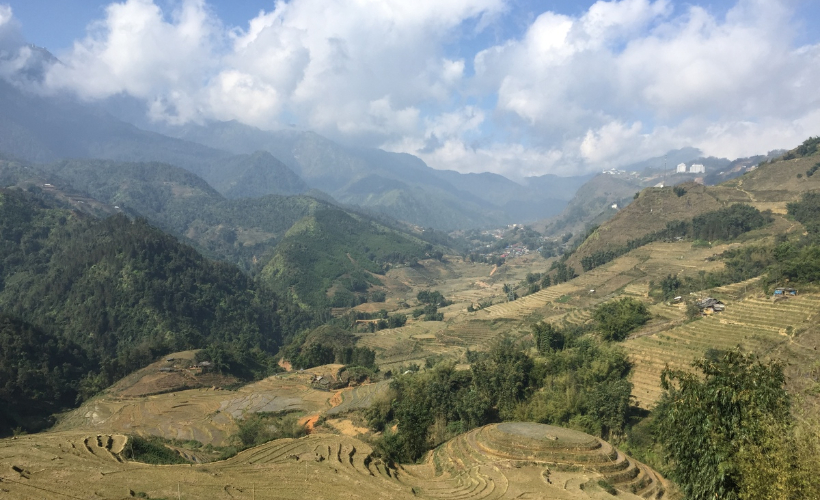
It was a last-minute decision with my two girlfriends to go to a nearby trekking destination before I started my new job. Sapa in Vietnam went to the top of my list of places to visit when photos of its panoramic rice terrace view in a travel magazine I was reading caught my eye. Sapa is a small mountain town in the Lao Cai Province that’s located about 350 kilometres northwest of Hanoi and close to the Chinese border. All I expected to take from the trip was Sapa’s stunning views, but there were more things to experience in this quaint village. Here are the four key lessons that I learnt from my trip to Sapa:
1. Do your homework
Before your trip, research your activities to ensure money is spent empowering the locals themselves rather than the intermediaries. As my group was all women, I was extra cautious in searching for a local trekking guide to avoid any unpleasant experiences. I read online and understood that most travel operators take a high margin, leaving only a tiny amount to the local women guides who do the hard work. I came across this social enterprise called Sapa Sisters – its founding cause is what made me decide to engage them directly.
It was founded in 2009 by two artists from Poland and Sweden, and four Hmong women, including our trekking guide, Chi. The idea was simple yet empowering — it’s a trekking company operated by the Hmong women with no middle man. This empowerment is crucial in Hmong society where gender biases are still the norm. Women are treated as belongings to their husband’s families, have no right to inherit farmland, and are often discouraged to complete their education. Sapa Sisters not only provides stable income to Hmong women but also brings more pride to women in proving their economic worth. This helps to slowly change societal bias.
Aside from the cause, they offered us a great customer experience. This includes shower facilities equipped with towels, hairdryers, and near-perfect transport arrangements. They were extremely professional and I’m glad to have been able to support them.
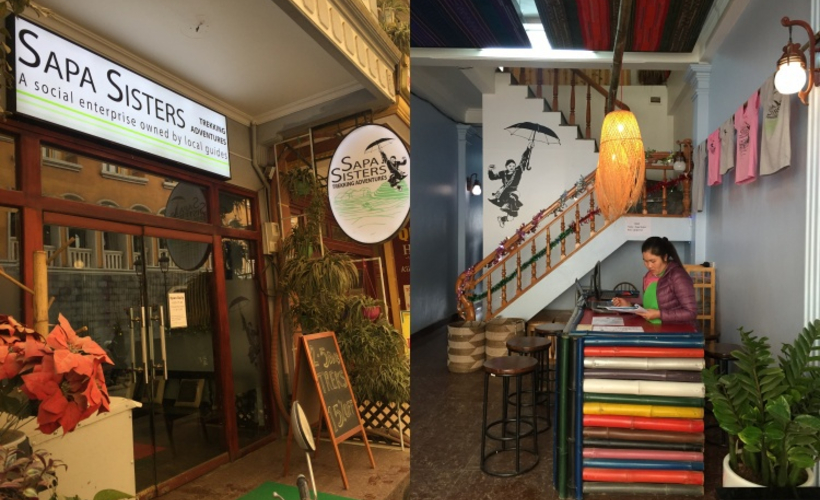
Chances are, there’s always a way to support the local community wherever you go. Here’s one in beautiful Nepal:
Community Homestay Empowering Women And Entire Villages In Nepal
2. Provide for the future
I learned a great lesson from the Hmong women – have the grit to provide a better life for the next generation. “I hope my children receive an education and live a better life. I don’t want them to be farmer or souvenir seller in the village,” Chi told me while holding a red umbrella, wearing a traditional headscarf and a colourful knitted crossbody pouch. Chi has been a guide for over 10 years, and her aim is to empower other young Hmong women to have pride and be financially independent. Despite being illiterate, she understands the importance of education to change her family’s fate, and so insisted on earning a living to send both her children to school.
Attracted by her friendly smile and fluent English, we talked about her family and her journey of being a tour guide. She received no education and picked up the English language from the countless tourists she’s met and by practising daily. If that’s not grit, then I don’t know what is!
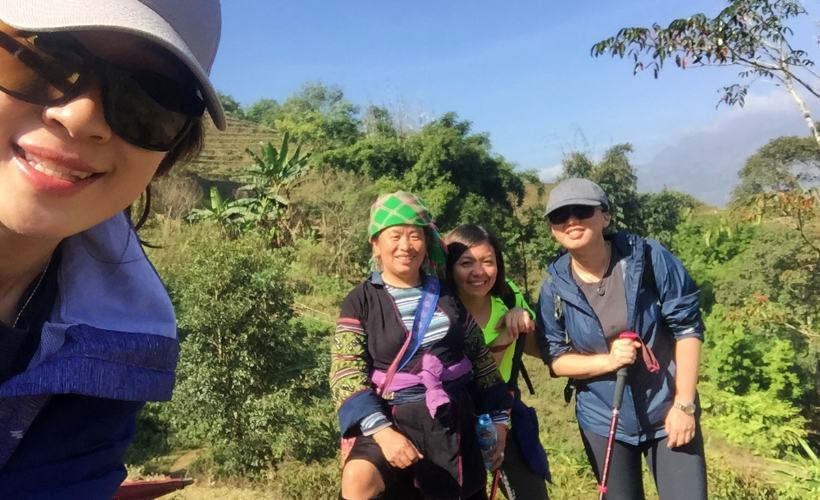
3. Know that life’s simple
Two days of trekking around the mountains reminded me of how simple life actually is. After a few hours of trekking on the first day, Chi brought us to a native house for a modest lunch. Out of curiosity, I visited the kitchen and observed how the host prepared our home-cooked meal. The kitchen setup was basic and traditional; our host had started a wood fire and sat on a little stool to cook. We were seated at a wooden table outside the kitchen and were served lunch with four viands.
There were no fancy or expensive ingredients, and yet the food tasted superb. When we reached our homestay in the evening, there were also no fancy rooms with luxury setups, but we were content with what was provided – a clean bed, local food, and a shower. All this made me realise that if we could do away with the wants and focus on the necessities in our lives, then we’d really want for nothing.
During the evenings while at our homestay, everyone was literally disconnected from all electronic gadgets. All the trekkers and guides gathered in the hall waiting for dinner to be served. Hmong guides helped each other to prepare dinner, while trekkers from various countries and nationalities shared stories and experiences. The feeling of everyone getting together made me reflect on the difference between getting connected and making connections in modern life.
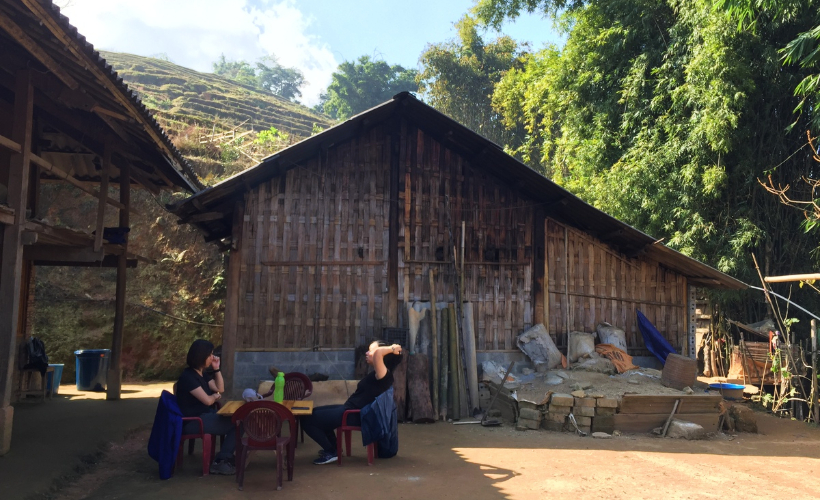
4. It is okay to slow down
Sometimes, it is okay to pause and slow down a fast-paced life to enjoy the beauty of nature around us. Sapa is famous for its borderless rice terraces, but I was more blown away by the slow pace of living among the villagers. We passed villages while trekking across rivers and muddy paddy fields, and got to meet some of the farmers’ families who greeted us with great big smiles at their doorstep. Some offered us raw sugar cane to chew on as dessert. So yummy!
Along the way, I also saw cows and chickens running about freely through the rice terraces and homes. Children were playing ‘football’ with empty cans. Everything was peaceful and calm. We reached our homestay in the evening when the temperature dropped slightly lower. We sat down at the balcony and sipped tea while enjoying a gorgeous sunset over mountains covered in yellowish rice terraces. It was just the kind of escape we needed from a city’s hustle and bustle to refresh ourselves. The locals had reminded us that slowing down was key to be able to keep pushing forward. And this rang true, especially for me, as I was about to take on a big new role in my career.
*All images courtesy of the author.

